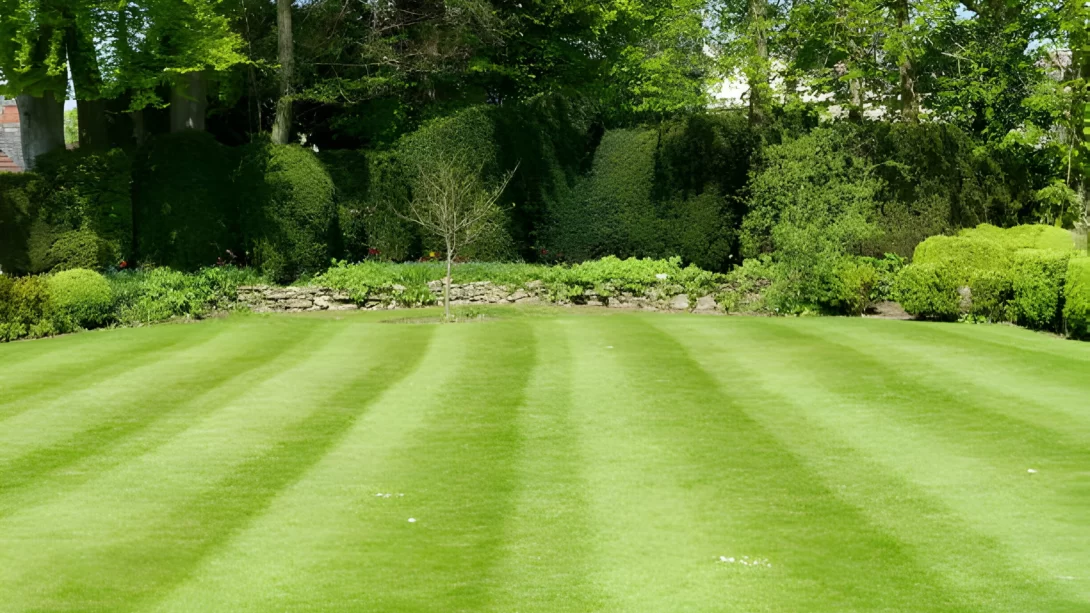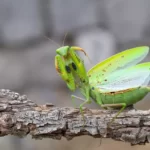A striped lawn, with its alternating light and dark bands, can significantly enhance the aesthetic appeal of any garden. This landscaping technique, often seen on sports fields and in professional gardens, is not only about beauty; it also reflects the health and care of your lawn. In this article, we’ll guide you through the process of creating a striped lawn, transforming your garden into a visually appealing landscape.
Lawn Striping
Lawn striping is created by bending the grass blades in different directions. The stripes are a result of light reflecting off blades bent towards you (dark stripes) and away from you (light stripes). This effect is temporary and does not harm the grass. The visibility and contrast of the stripes depend on factors such as grass type, blade length, and the angle of the sunlight.
Essential Tools and Equipment
To achieve a striking striped effect, you will need the right tools:
- Lawn Mower with a Roller: The key tool for lawn striping is a lawn mower equipped with a rear roller. The roller bends the grass as you mow, creating the striped effect.
- Types of Mowers: Different mowers are suitable for striping, ranging from push mowers with rollers to more advanced riding mowers. The choice depends on the size of your lawn and your budget.
- Other Tools: For more intricate designs, additional tools like measuring tapes or garden hoses to mark out patterns can be helpful.
Preparing Your Lawn
A well-maintained lawn is crucial for impressive striping:
- Healthy Grass: Start with a healthy, well-fed, and disease-free lawn. Regular mowing, watering, and fertilizing are essential to keep your grass in top condition.
- Level Surface: Uneven ground can lead to inconsistent stripes. Level out any bumps or depressions in your lawn for uniform striping.
- Grass Length: Keeping your grass at an optimal length is vital. Too short, and it won’t bend effectively; too long, and it may look unkempt.
Step-by-Step Guide to Creating Lawn Stripes
Creating a basic striped lawn pattern is straightforward, but it requires careful mowing technique and planning:
- Planning Your Pattern: First, decide on the pattern you want. The most common and simplest is the straight line pattern. Consider the shape and size of your lawn and how the pattern will look from different viewpoints.
- Mowing Technique: Start by mowing around the perimeter of your lawn to establish a border. Then, mow in straight lines back and forth across the lawn. To create a straight line, focus on a point at the end of the row as you mow.
- Roller Use: Ensure the roller on your mower is in contact with the grass to bend the blades effectively. The pressure exerted by the roller is what creates the striped effect.
- Stripe Direction: Alternate the direction of your mowing each time you mow. This not only enhances the striped effect but also prevents the grass from being bent in only one direction, which can affect its health.
Advanced Striping Techniques
For those who want to take their lawn striping to the next level, more complex patterns like checkerboards or diamonds can be achieved with extra planning and technique:
- Checkerboard Pattern: Create by mowing in straight lines as described above, then mowing perpendicular lines across the first set.
- Diamond Pattern: This is achieved by mowing in diagonal lines across the lawn and then going over it again in the opposite diagonal direction.
- Adjustments for Grass Types: Be mindful of the type of grass in your lawn, as some grasses may bend or rebound differently, affecting the appearance of your pattern.
Remember, intricate patterns may require more practice to perfect and maintain.
Lawn Maintenance for Preserving Stripes
Maintaining your striped lawn involves regular care:
- Consistent Mowing: Regular mowing is key to keeping your stripes looking sharp. As the grass grows, the striped effect will become less pronounced, so frequent mowing will help maintain it.
- Seasonal Care: Adjust your lawn care routine with the changing seasons. For instance, grass growth slows in the fall, so you might not need to mow as often.
Conclusion
Creating and maintaining a striped lawn is a rewarding endeavor that adds a professional touch to your garden’s aesthetic. While it might seem daunting at first, with the right tools, techniques, and a bit of practice, anyone can achieve this striking effect.
To recap, the essentials for successful lawn striping include:
- Choosing the Right Equipment: A lawn mower with a rear roller is crucial for bending the grass blades to create stripes.
- Regular Lawn Maintenance: Keeping your grass healthy and at an optimal length is vital for prominent stripes. Regular mowing, watering, and fertilizing will ensure your lawn stays in top condition.
- Technique and Practice: Whether you’re aiming for simple straight lines or more complex patterns, the key is to mow with precision. Focus on maintaining straight lines and consistent pressure with the roller.
- Pattern Variation: To keep your lawn healthy and the stripes distinct, alternate the direction of the stripes with each mowing session.
Remember, lawn striping is more than just a cosmetic treatment; it’s a demonstration of the care and attention you invest in your lawn. With each stripe, you’re not only enhancing its beauty but also showcasing your dedication to lawn care.
As you become more comfortable with basic striping, don’t hesitate to experiment with more intricate patterns to personalize your garden. The beauty of lawn striping lies in its combination of art and nature, offering a canvas on which to express your gardening creativity.
In conclusion, a striped lawn can transform an ordinary garden into an extraordinary one. It reflects both the health of your lawn and your skills as a gardener. Embrace the process, enjoy the outdoor time, and take pride in the stunning visual impact a striped lawn brings to your home.



